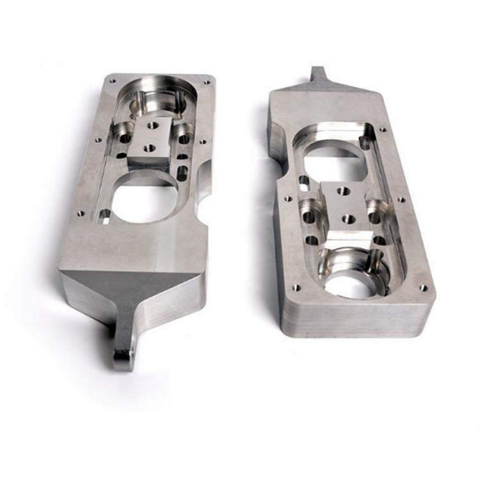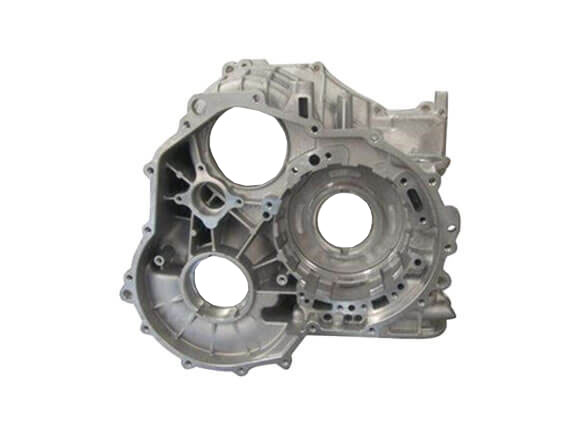The Role of Aluminum Casting Company Improves Aerospace Engineering and Design
Aluminum Casting Explained: Secret Facts and Insights for Sector Professionals
Aluminum casting serves as an important process in modern production, shaping parts across different fields. Its varied techniques, such as sand and die casting, satisfy various manufacturing demands. The distinct residential properties of aluminum alloys enhance their applicability, yet tests stay in preserving high quality and effectiveness. Recognizing these facets is essential for market experts. What are the most recent developments and ideal methods that can even more optimize this procedure?
Introduction of Aluminum Casting Processes

Crucial element of aluminum casting procedures include the preparation of molds, which might be made from sand, steel, or ceramic products, depending on the meant usage. Furthermore, temperature control is crucial to ensure proper melting and solidification of aluminum.
The casting procedure permits elaborate layouts and can attain high levels of dimensional precision. As soon as cooled, the castings may undergo ending up procedures such as machining or surface treatment to satisfy particular performance requirements. In general, aluminum casting functions as a functional manufacturing method, efficiently satisfying the diverse demands of various markets.
Types of Aluminum Casting Techniques
In the domain name of aluminum casting, various methods are used to achieve various outcomes. Sand casting techniques provide flexibility and cost-effectiveness for complicated forms, while die casting procedures provide high accuracy and performance for automation. Recognizing these techniques is vital for picking the appropriate approach based on task needs.
Sand Casting Methods
Sand casting methods stand for a basic method in aluminum casting, where sand is made use of as a mold and mildew product to form molten metal. This procedure includes producing a pattern from the preferred component, which is then put in a sand mixture to develop a mold. The sand is compacted around the pattern, and after elimination, it produces a dental caries in the form of the component. Molten aluminum is poured right into this tooth cavity, enabling it to cool and strengthen. One considerable advantage of sand casting is its adaptability; it can suit intricate shapes and big parts. Additionally, the products utilized are reasonably affordable, making it an available alternative for various production applications in the aluminum market.
Die Casting Processes
Die casting procedures are a popular method for forming aluminum parts, using high-pressure techniques to compel liquified metal right into specifically crafted mold and mildews. This process is especially favored for its capacity to generate complicated forms with tight tolerances and a smooth surface. There are two main kinds of die casting: hot chamber and cold chamber. Hot chamber die casting is appropriate for steels with reduced melting points, permitting faster production prices. Conversely, cool chamber die casting is suitable for greater melting factor steels, requiring a different melting furnace. Both approaches boost effectiveness and lower product waste, making them necessary in automotive, aerospace, and customer goods industries. Comprehending these processes assists professionals pick one of the most proper strategy for their particular applications.
Material Quality of Aluminum Alloys

Toughness and Resilience
Toughness and resilience are crucial features of aluminum alloys that make them appropriate for numerous casting applications. These products display a positive strength-to-weight ratio, permitting the creation of light-weight yet robust components. When it come to tensile stamina, certain aluminum alloys can be engineered to withstand significant loads without flawing. This building is specifically important in industries such as aerospace and automotive, where performance and safety and security are vital. Furthermore, aluminum alloys frequently retain their mechanical buildings under diverse temperature level problems, making sure constant performance. The inherent ductility of these alloys likewise enables effective shaping throughout the casting procedure, making it less complicated to produce intricate geometries. Generally, the toughness and sturdiness of aluminum alloys add significantly to their extensive use in advanced applications.
Corrosion Resistance Characteristics
While aluminum alloys are valued for their toughness and light-weight homes, their rust resistance is another crucial feature that improves their viability go to these guys for various applications. Aluminum naturally forms a safety oxide layer when subjected to dampness, which aids to stop further oxidation. This fundamental property makes aluminum alloys particularly valuable in environments prone to corrosion, such as marine and commercial settings. Furthermore, various alloy make-ups can influence resistance levels, with specific alloys particularly engineered to enhance this characteristic. Therapies like anodizing can even more enhance corrosion resistance by thickening the oxide layer. As a result, understanding the deterioration resistance of aluminum alloys is necessary for industry professionals when picking products for jobs needing longevity and longevity in difficult settings.
Benefits of Aluminum Casting in Production
Aluminum casting deals countless benefits in manufacturing, making it a recommended choice for different industries. One substantial advantage is its lightweight nature, visit which contributes to minimized transportation expenses and boosted energy efficiency in end products. Aluminum's superb thermal and electrical conductivity improves performance in applications requiring warmth dissipation or electrical conduction.
The material's ability to be cast into elaborate shapes permits layout versatility, reducing the need for extra machining processes. Additionally, aluminum casting displays remarkable deterioration resistance, leading to longer item life-spans and lower upkeep expenses.

Usual Applications of Aluminum Castings
The adaptability of aluminum casting allows its widespread use throughout numerous sectors. Typical applications include auto parts, where light-weight and corrosion-resistant parts, such as engine blocks and transmission real estates, boost lorry efficiency. In the aerospace industry, aluminum spreadings are made use of for architectural parts, offering stamina without including substantial weight.
In addition, the electrical industry benefits from aluminum spreadings in producing rooms and warmth sinks, where thermal conductivity is vital. The durable goods sector also integrates aluminum spreadings in items like cooking equipment, furnishings, and decorative items, incorporating looks with performance.
The building sector uses aluminum spreadings for architectural elements, window structures, and fixtures, which give resilience and layout versatility. In general, the varied applications of aluminum castings underscore their value in modern-day manufacturing, contributing to developments in effectiveness and product design throughout several fields.
Technologies and Technical Advancements
As markets remain to develop, innovations in aluminum casting modern technology are transforming production procedures and item capacities. Innovations in 3D printing and additive production have allowed the creation of complicated geometries that were previously difficult to attain with traditional methods. These innovations enable rapid prototyping, reducing preparations and expenses.
Furthermore, enhancements in mold design and products have improved the casting procedure by enhancing performance and lowering waste. The combination of smart production methods, such as IoT devices and real-time data analytics, permits for better surveillance and optimization of production parameters, causing better outcomes.
Developments in aluminum alloys offer boosted strength, rust resistance, and lightweight properties, providing to the expanding demands in aerospace and auto markets. Collectively, these innovations are not only improving performance however also meeting the strenuous requirements of modern engineering applications.
Ideal Practices for Quality Assurance in Aluminum Casting
Making certain high-grade outcomes in aluminum casting requires adherence to finest methods that encompass numerous stages of the production procedure. Complete product evaluation is important to validate the top quality of aluminum alloys used, as impurities can greatly affect the final product. Carrying out exact melting and putting techniques reduces flaws; keeping excellent temperature levels avoids oxidation and promotes uniformity.
In addition, mold layout plays a critical function; using computer-aided style (CAD) can enhance accuracy and lower human mistake. Routine monitoring of the cooling process is critical to stay clear of index bending and shrinking. Furthermore, using non-destructive testing methods, such as ultrasonic or X-ray examinations, aids identify inner imperfections without damaging the elements.
Lastly, developing a comments loop with designers and drivers fosters continual improvement, guaranteeing that quality control procedures evolve along with technical improvements. By following these ideal techniques, makers can enhance the reliability and performance of aluminum spreadings.
Regularly Asked Questions
What Are the Environmental Influences of Aluminum Casting?
The environmental effects of aluminum casting include considerable energy usage, greenhouse gas exhausts, and prospective water contamination from factory operations. Furthermore, bauxite mining for aluminum ore can result in environment devastation and soil degradation.
Exactly How Does Aluminum Casting Contrast to Other Metal Casting Processes?
Aluminum casting generally offers benefits in lightweight components and corrosion resistance contrasted to other processes, such as iron or steel casting, which might give higher toughness however result in larger and less corrosion-resistant items. - Precision aluminum casting
What Prevail Problems in Aluminum Castings and Their Causes?
Typical defects in aluminum castings include porosity, contraction, and additions. Causes typically stem from inappropriate pouring strategies, inadequate mold style, or contamination of the liquified steel, influencing the last item's honesty and efficiency.
What Safety Safety Measures Should Be Taken Throughout Aluminum Casting?
Throughout aluminum casting, necessary safety precautions include using protective gear, ensuring proper air flow, keeping a tidy work space, managing liquified steel with treatment, and following well-known procedures to minimize dangers of burns, inhalation dangers, and crashes.
Just How Can I Improve the Efficiency of My Aluminum Casting Workflow?
To boost performance in aluminum casting procedures, one should optimize mold style, streamline product handling, employ automated procedures, conduct routine maintenance on devices, and invest in staff member training to improve skills and efficiency.
Various techniques exist, aluminum casting incorporates several primary procedures that cater to different applications and needs. Key aspects of aluminum casting procedures consist of the preparation of mold and mildews, which might be made from sand, metal, or ceramic materials, depending on the intended usage. Sand casting strategies stand for a basic method in aluminum casting, where sand is made use of as a mold and mildew material to shape molten metal. As sectors continue to progress, advancements in aluminum casting technology are transforming production procedures and item capabilities. Making certain high-grade results in aluminum casting calls for adherence to ideal methods that encompass various stages of the production process.